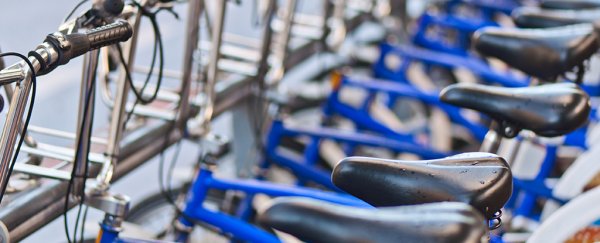Norway is backing up its climate change pledges with some cold, hard cash: the local government has announced it intends to spend 8 billion Norwegian Kroner (roughly US$944,777) on a new bicycle path network.
The network of 10 two-lane, cross-country bike highways will enable cyclists to travel more safely and quickly across cities than before - an incentive the city hopes will drag people away from their cars.
The new bike paths are part of the country's commitment to cut its overall transport emissions in half and become fully carbon neutral by 2050, reports Mental Floss.
One part of that plan is to have zero growth in car use between now and 2030, and vehicle taxes are about to be raised to help make that a reality. The government also plans to buy greenhouse credits to offset its emissions.
Norway's cyclists will be able to use the new paths to go from inner city areas to the outer suburbs at speeds of up to 40 kilometres (25 miles) per hour, which should allow for longer commutes and take the pressure off public transport and congested roads. By 2030, the authorities want 10 to 20 percent of all journeys to be made by bike.
However, not everyone is convinced. "Right now in the winter it's not realistic for people to throw themselves onto bikes," politician Kjell-Idar Juvik said in a newspaper interview, as reported by CityLab's Feargus O'Sullivan. "They already have enough trouble getting out and scraping snow off their cars."
Then there's the problem of gradients - once you get outside of Norway's inner cities, the hills can rise quite steeply.
Opponents to the scheme would rather see the same money invested into improving public transport. Cycling is not as popular as it is in other Scandinavian countries, but the government is hoping that might change once the new paths are introduced. In fact, one of the members of the Transport Committee is an avid cyclist and has biked the entire length of the country.
The Norwegian government is also introducing new low-emission guidelines for buses, trucks, ships, and ferries, while railways and roads are being repaired and upgraded across the country too. One plan in the pipeline is to cut down on the use of ferries by building more bridges across Norway's fjord-packed coastline, reducing journey times.
For the time being, cycling is more common in neighbouring countries such as Sweden and Denmark.
The authorities in the Danish capital Copenhagen have recently installed intelligent traffic lights that give priority to bikes and buses rather than cars. As it is in Norway, the intention is for commuters to have a smooth, interrupted cycle into the city centre (and back out at the end of the day), and make the environmentally friendly option a more convenient one too.
